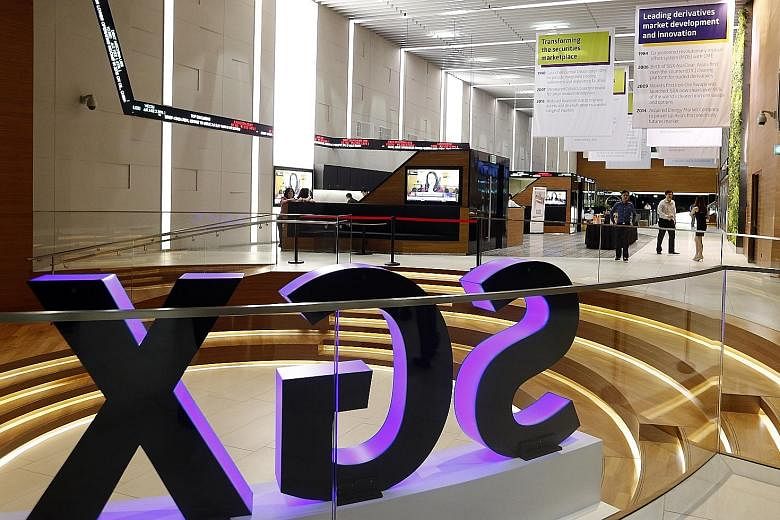The Singapore stock market is again back in the red for the year after a grim couple of weeks.
Retail investors are now holding fire amid a lacklustre corporate earnings season and downbeat global growth forecasts, and institutional funds are selling out of their equity holdings in Singapore to raise cash to pay for redemptions.
The Straits Times Index (STI) closed 0.3 per cent or 8.28 points lower at 2,732.87 yesterday and is now down 5.2 per cent for the year, after plunging as much as 12.1 per cent in January. As recently as April 21, the STI was in the black, up 2.7 per cent, for the year.
The selldown on local stocks, notably blue chips, has proved deeper than expected, as the STI languishes well below the 2,800 level, DBS Group Research said. It cited the weak first-quarter results season, Singapore's market price to earnings valuation, stocks going ex-dividend and a lack of positive catalysts.
Data as of April 20 from EPFR Global, which tracks mutual fund flows, shows Singapore has sustained equity outflows since last September
"Redemptions from Singapore-focused funds have increased, forcing some institutional funds to sell their equity holdings in Singapore to raise cash to pay these investors, most of whom are high net worth individuals," an analyst with a local brokerage said.
"There is not a lot of interest for Singapore stocks from institutional clients. Some want to diversify out to other regions like the US or emerging markets like the Philippines, or to other asset classes, or to cash. Many Japanese investors are doing direct investments like building factories and buying property, rather than investing in equity markets.
"We are not in a crisis, but capital outflows from Singapore seem to be prolonged because China isn't showing strong signs of growth, and also because of bearish global growth expectations and the United States interest rate hike overhang," he said.
Sapping retail investor interest is a less than uplifting tally on first-quarter earnings so far, DBS said. Thirty per cent of companies reported earnings below expectations, 63 per cent were in line while only 7 per cent came in above, it noted.
"Once again, the disappointments came from the offshore marine sector that continued to struggle amid sluggish order wins for rig builders Sembcorp Marine and Sembcorp Industries due to the uncertain oil price environment.
"Earnings for the sector were slashed 11 per cent quarter-on-quarter for full year 2016, and 5.2 per cent quarter on quarter for full year 2017," it added.
UOB Kay Hian research head Andrew Chow agreed. "As the local earnings outlook has weakened and continues to be weak, there is no reason for PE valuations to rise."
Worries over the asset quality of local banks given slowing Asian economic and trade growth, and their exposure to China as well as the beleaguered oil and gas sector, also weighed on sentiment.
"For the three banks, we expect rising pressure on profitability, due to additional provisioning - particularly as the banks' specific provisions for oil and gas companies are low - because these loans are collateralised by specialised oil and gas equipment," Moody's Investors Service said last week.
The selldown last week also coincided with the rebound in the US dollar to 1.36 levels against the Singdollar after four regional US Federal Reserve presidents said they were open to considering a June rate hike if the data justified it, DBS said.
"But, in the near term, we believe that the correction will end soon. Current STI PE valuation looks to have priced in the first quarter earnings cut, while technical indicators have fallen to oversold levels," it added.


